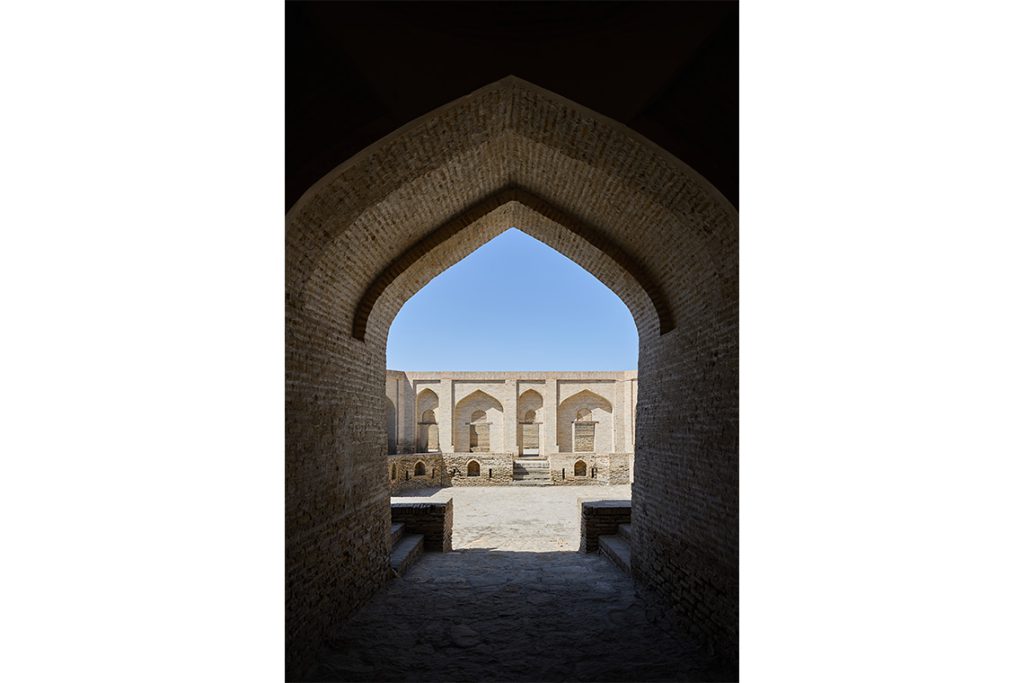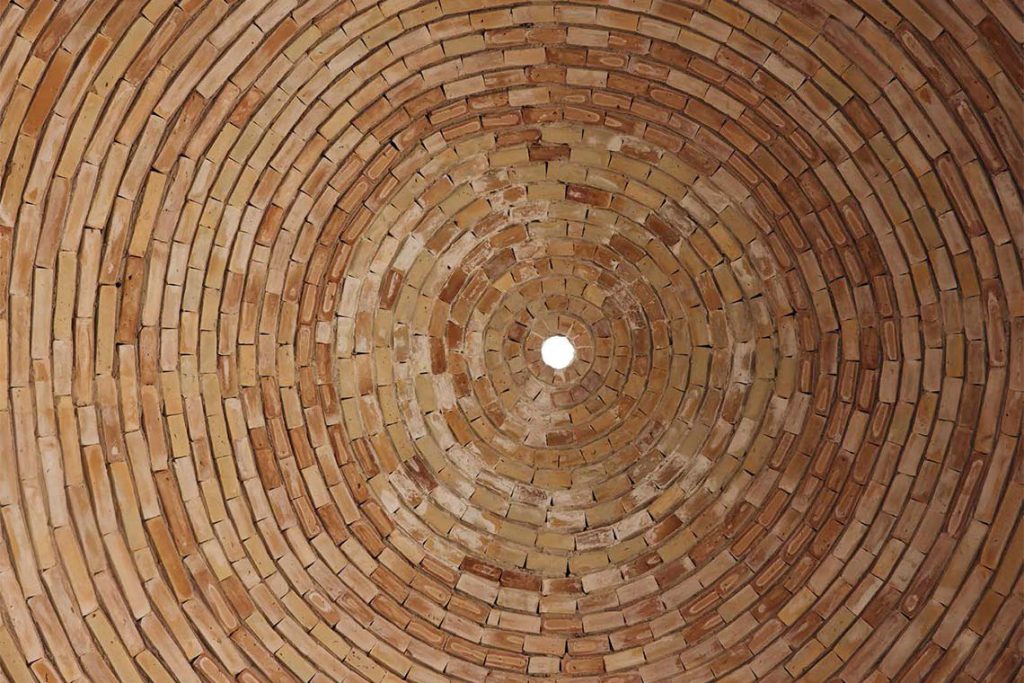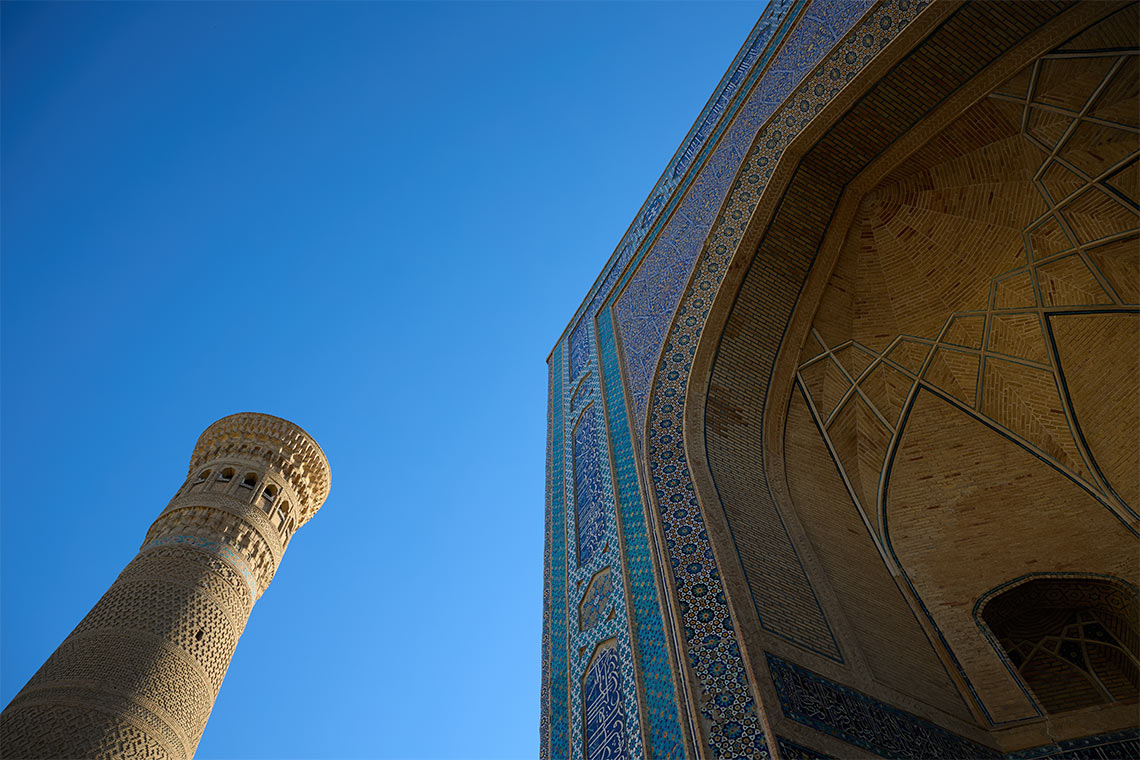Commissioned by the Uzbekistan Art and Culture Development Foundation and the largest contemporary art initiative in Central Asia to date, the inaugural Bukhara Biennial will draw upon the country’s rich cultural history to highlight the impact of art and culture on exchange, shared experiences and collective healing.
There is something that stands out about Bukhara, with its vibrant historic centre recognised as an UNESCO Creative City of Crafts and Folk Art and UNESCO World Heritage Site. An age-old important intellectual and economic centre on the Silk Road, for many centuries Bukhara was firmly established as a cosmopolitan hub that connected Uzbekistan with Asia, Africa, Europe and even further afield, including the Americas. The launch this year of the Bukhara Biennial sees the city and wider nation renew their erstwhile status as a global focus for the exchange of art, culture and wider conversations.
Part of a city masterplan spearheaded by Gayane Umerova, chairperson of the Uzbekistan Art and Culture Development Foundation (ACDF), the biennial is a key element in the foundation’s long-term plans for Bukhara. These are designed to restore and amplify local heritage and culture via special projects, events, institutions and international partnerships that are both meaningful and permanent, rather than ephemeral. A wide range of activities will preserve and build on tradition while providing the tools to advance into the future and be self-sustainable. The country’s unique cultural fabric provides a dynamic platform for artistic production and discussion, celebrating an intertwined relationship between craft and art, past and present, local and global, and tangible and intangible. The biennial, commissioned by Umerova, adds additional layers of oscillation – philosophical and biological – that further solidify the sense that there is something different, something special, about Bukhara.

Under the theme Recipes for Broken Hearts, the inaugural Bukhara Biennial navigates the city’s cultural complexity through a universal sensation of heartbreak. Likening the event to “a body which is fed physically, emotionally and spiritually, encouraging communal participation and experiential response”, biennial artistic director Diana Campbell – founding artistic director of Dhaka’s Samdani Art Foundation, chief curator of the Dhaka Art Summit and former curator of Frieze Projects and Desert X Coachella – tackles the sentiment from personal, ecological and social perspectives. Specialised in the nuances of craft in relation to contemporary dialogues, she weaves together myriad approaches, ranging from art, traditional craft, textile and music to architecture, dance, the culinary arts and academia.
There are also references to how relational aesthetics and neuroaesthetics – relatively new terms for participatory art where the social context and experience becomes the artwork, and for the scientific study of how the brain processes and responds to aesthetic encounters, respectively – play a substantial role in daily Uzbek life. The biennial seeks to explore these long-existing realities, both theoretically and practically. The most prominent is the emphasis on the healing power of art through sub-themes such as heartbreak, emotional intelligence-driven learning, transcendence and mourning, as well as local myths. The theme itself is derived from an Uzbek legend explaining how the national dish, palov, was created by Ibn Sina (c.980–1037 CE) – the polymath and father of modern medicine – to cure a heartbroken prince who was unable to marry a craftsman’s daughter. Today’s modern study of neuroaesthetics lends legitimacy to the affirmation by ancient lore that feeling-based experiences are able to ignite social change, further supporting Campbell’s assertion that the impact of beauty goes beyond its purely aesthetic value.
The Bukhara Biennial calls upon a multisensory and interdisciplinary approach, one which is innately facilitated by the city’s diverse cultural history and further supported by the biennial’s in-situ commissions, a blended collaboration of local and international artists and Bukharan artisans. New modes of thinking are encouraged, alongside an environment of exchange and equality: as much as one creator learns from another, artist and craftsperson are brought to the same level of recognition and value. Supplementary symposia, poetry, performances, workshops and educational programmes will also take place, supported by an interdisciplinary academic advisory group comprising conservation, art history, archaeology and religious experts from top global institutions. By engaging multiple experiential pathways, the 10-week-long biennial will foster deeper appreciation, understanding, empathy, learning and, potentially, pro- or reactive action. Campbell’s curatorial aspiration is for the event to surpass the traditional biennial model and encourage a reassessment of the relationship between craft and art.

This multiplicity is mirrored in the chosen location, a renewed historic district in Bukhara – a space dominated by buildings which could be described as visual poetry – wherein practical forms are imbued with magnificent aesthetic attention and intricacy. The district is currently being restored to embrace traditional and vernacular architecture and methods while addressing modern needs and forward-facing plans, including the addition of artist studios, museums and archives. By carefully considering the synergy between building flow in the historic district, as well as ACDF’s plan to incorporate the city beyond the biennial site and the relationship between site-specific artworks and the existing architecture, the biennial will serve as a literal and metaphorical stage for collaboration and exchange.
Being a hub for convergence is ingrained in Uzbekistan’s cultural fabric. Historically, Bukhara was deeply entwined with learning and the trade in spices. This thread is expanded upon by Campbell, who has observed that the culinary arts are closely connected to healing and art. Food also serves as a thematic vehicle to literally bring everyone to the table – public, craftspeople, artists and more. Satellite programming will see local and international chefs showcasing the complexity of their cuisines on alternate weekends, exploring food as an evocative, emotional and nostalgic medium. The connection is further explored by the 70 (and counting) participating creatives, who comprise a strong showing of Uzbek artists such as Aziza Azim, Behzod Boltaev, Gulnoza Irgasheva and Oyjon Khayrullaeva, alongside international names including Antony Gormley, Wael Shawky, Slavs and Tatars, Ahmad Angawi, Dana Awartani and Hera Büyüktaşcıyan. Their artworks employ food as a universal language to segue into diverse aspects of the human condition, with each location exhibiting artworks that explore specific facets of the biennial theme. For example, four “Silk Road hotel” caravanserais (Ayozjon, Ulugbek Tamokifurush, Ahmadjon and Fothullajon) will tackle heartbreak; the Gavukshon Madrasa will address learning from feelings; the Rashid Madrasa will discuss memorialisation and mourning; and the former mosque Khoja Kalon will embrace the concept and reality of moving on.
Grief is considered through performative culinary rituals, as will be seen through German artist Carsten Höller, who will partner with Uzbek chefs, and Korean Buddhist monk-chef Jeong Kwan, who will bring her food-centric spirituality. Nostalgic wonder and knowledge acquisition will be inspired by Egyptian artist Laila Gohar’s edible artisanal Uzbek sugar and salt crystal pavilion, highlighting the preservation of traditional modes of making in the face of industrialisation. Broken hearts will appear through a ceramic floor mosaic by Bakhtiyor Bobomurodov (Uzbekistan) and Marina Perez Simão (Brazil), nodding to Uzbekistan’s role in the history of astronomical instruments and linking it to the philosophical disorientation of emotional discord. Kazakh film director Aisultan Seit’s three-part cinematic interpretation of the palov tale, made in collaboration with Uzbek artisans, will also explore this theme. Healing, meanwhile, will be interpreted by Colombian artist Delcy Morelos’s unification of vernacular architecture and installation via a web-like textile piece comprising sand, clay and spices to activate space, touch and smell; and seven generations of the Uzbek Rakhimov family’s ceramic know-how will join forces with Lithuanian artist Pakui Hardware to produce an AI-meets-sculpture piece inspired again by Ibn Sina. Here, visitor-shared whispers will be transformed into soothing murmurs and played back to the public from gall bladder-esque black glazed forms.
Setting ambitious new standards for events of this type, the Bukhara Biennial will reframe the conversation between art and craft and maker and object and sensitise a broader public to the diversity of contemporary heartbreak. Generating a space for togetherness, spirituality and intellectual and artistic knowledge, it will reconnect Bukhara to the world and people to each other.
The inaugural Bukhara Biennial will run from 5 September to 20 November 2025



